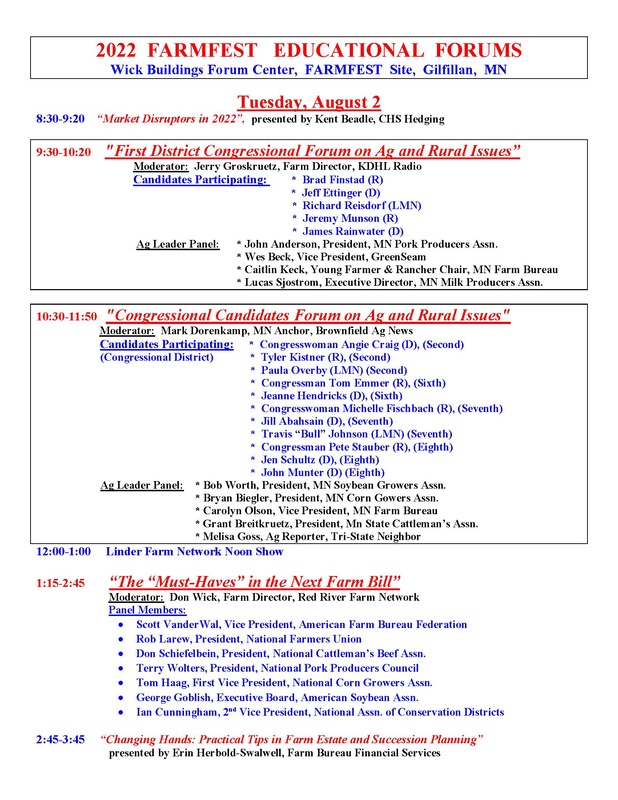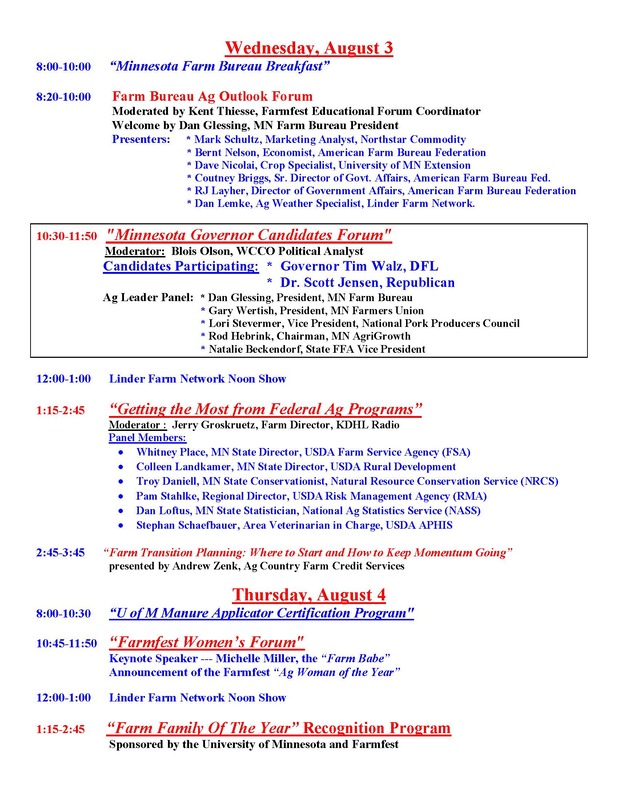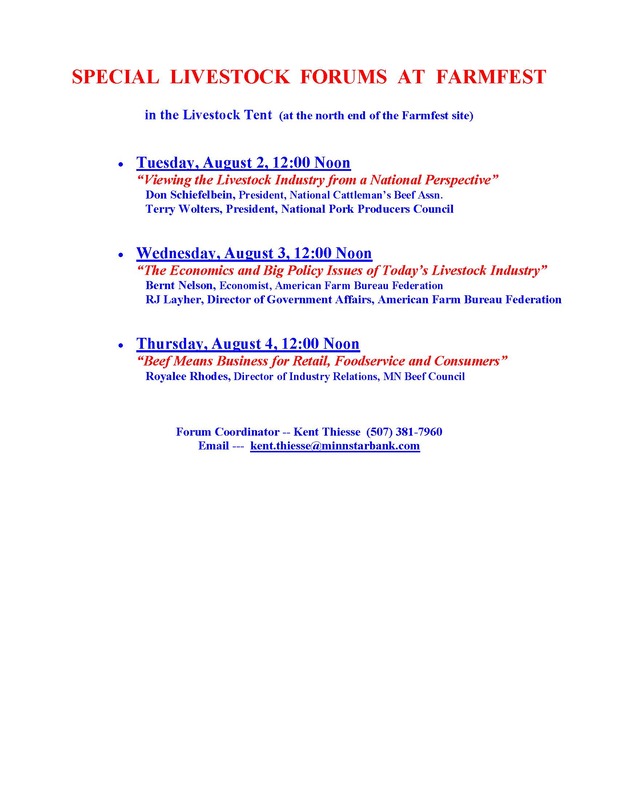AuthorThe “FOCUS ON AG” column is sent out weekly via e-mail to all interested parties. The column features timely information on farm management, marketing, farm programs, crop insurance, crop and livestock production, and other timely topics. Selected copies of the “FOCUS ON AG” column are also available on “The FARMER” magazine web site at: https://www.farmprogress.com/focus-ag Archives
July 2024
Categories |
Back to Blog
A ribbon cutting ceremony for the new “Champion Row” display at the Minnesota State Fair will be held on Saturday, August 27 at 12 pm in the center of the large cattle barn on the fairgrounds. The new and impressive Champion Row display will be on display throughout the Minnesota State Fair on August 25 through September 5. The Champion Row display will include the grand champion 4-H market livestock exhibits that are selected during the first weekend of the State Fair and will highlight the many supporters of the "4-H Purple Ribbon Livestock Auction" at the State Fair. The 4-H Purple Ribbon Auction will be held on Saturday, August 27, at 5:45 PM, in Compeer Arena on the State Fairgrounds. The premiums on 115 purple ribbon 4-H exhibits will be sold in the 4-H auction. In addition, 4-H Auction scholarships totaling over $115,000.00 will be presented to 53 outstanding junior leaders in the 4-H animal science program, beginning at 5 pm, just prior the 2022 4-H Purple Ribbon Auction. Twenty percent of the 4-H Auction proceeds are used to help fund the scholarships and for special 4-H livestock programs across Minnesota throughout the year. The Minnesota Livestock Breeders Association (MLBA) have sponsored the 4-H Auction since 1980. For more information on the “4-H Purple Ribbon 4-H Livestock Auction” and the 4-H scholarship program, please refer to the following web site: https://www.mlbapurpleribbonauction.org/
|

Contact Us:
Phone: 507.238.9456
e-mail: [email protected]
Photo Press | 112 E. First Street |
P.O. Box 973 | Fairmont, MN 56031
Office Hours:
Monday-Friday 8:00 a.m. - 4:00 p.m.
Phone: 507.238.9456
e-mail: [email protected]
Photo Press | 112 E. First Street |
P.O. Box 973 | Fairmont, MN 56031
Office Hours:
Monday-Friday 8:00 a.m. - 4:00 p.m.
Proudly powered by Weebly


 RSS Feed
RSS Feed


